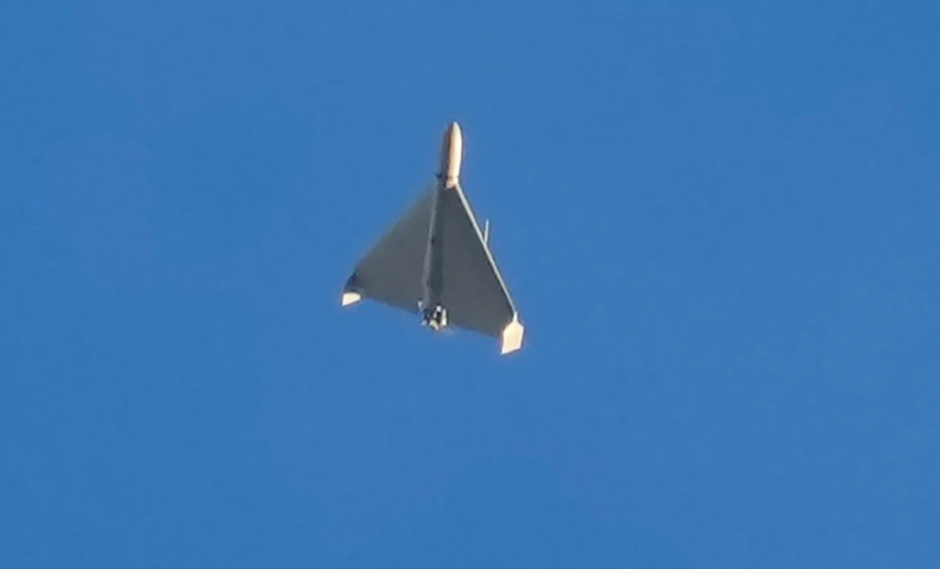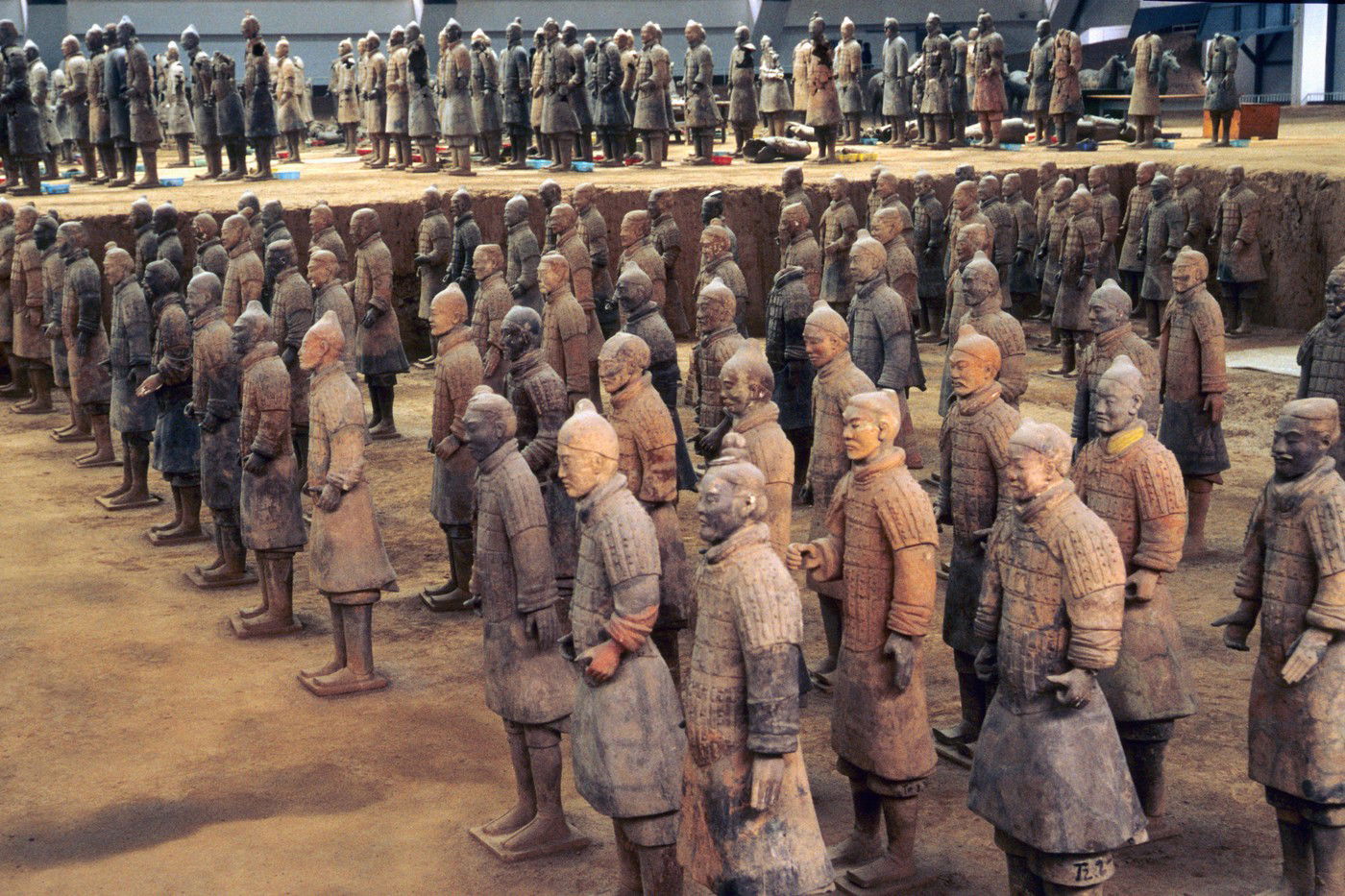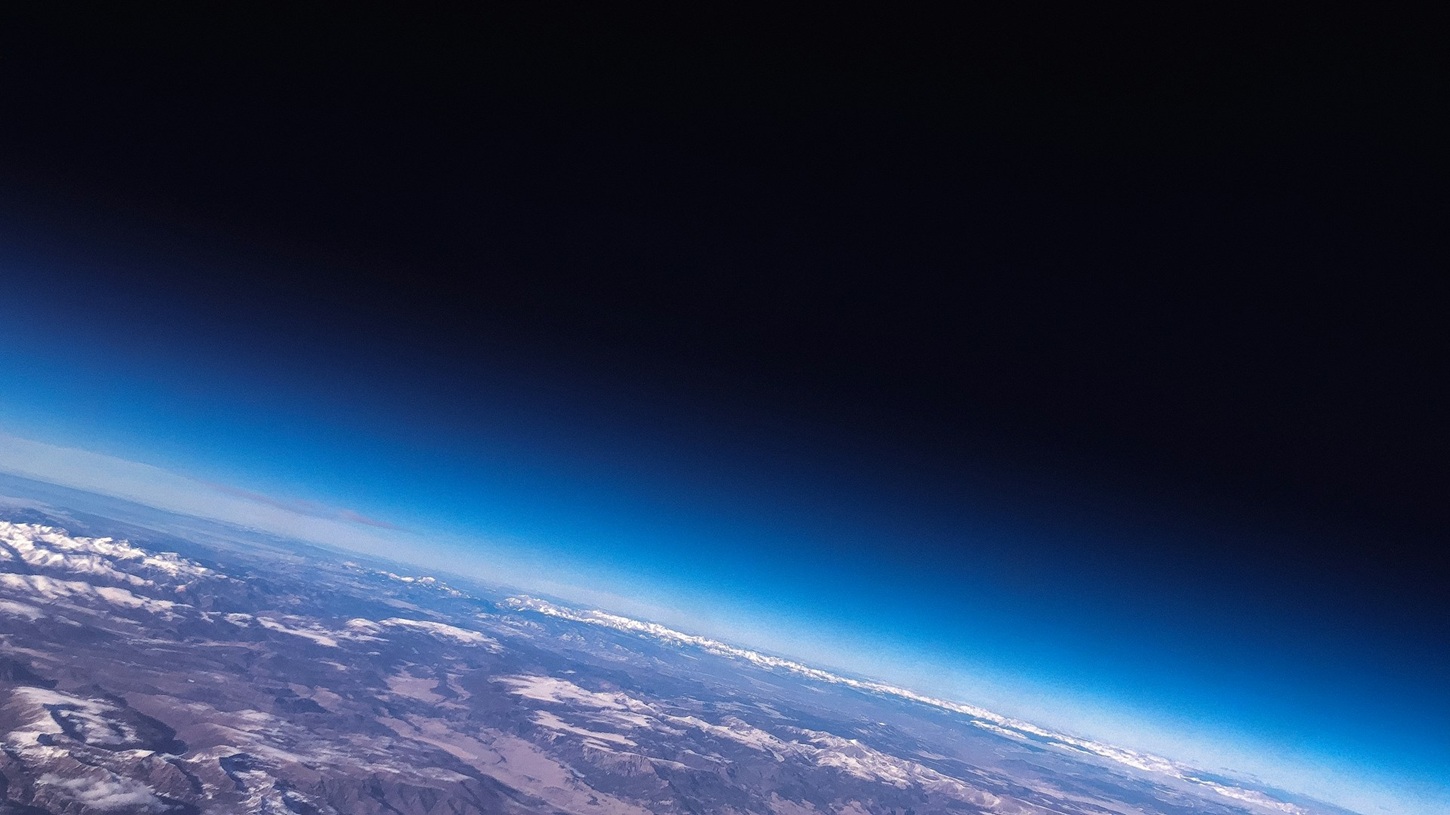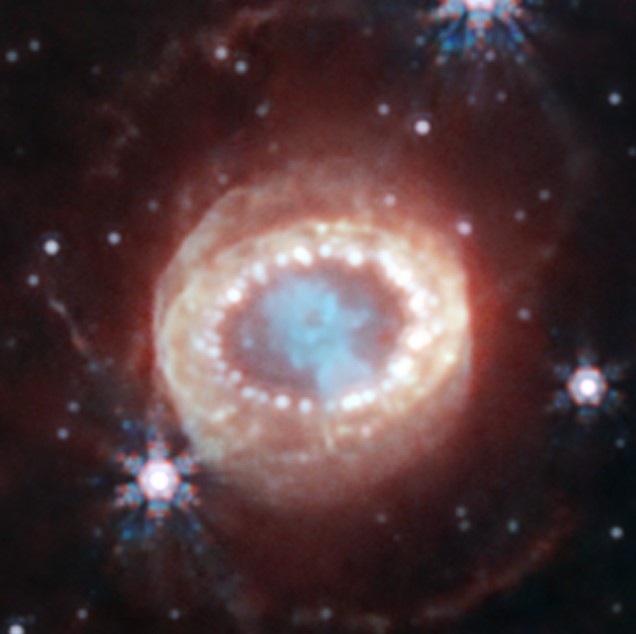One of the most famous supernovae, SN 1987A, was examined using James Webb’s NIRCam system, and new structures identified.
The James Webb Space Telescope has begun studying Supernova 1987A, located 168,000 light-years away in the Large Magellanic Cloud. Recent observations from the telescope show a central keyhole-shaped structure filled with dense gas and dust, surrounded by a bright equatorial ring.
There are also newly discovered crescent-like structures that may be part of the outer layers of material ejected by the supernova. This is all due to the fact that Webb’s high-resolution images are much more detailed than previous telescope observations.
Supernova SN 1987A is located 168,000 light-years away in the Large Magellanic Cloud and was discovered in February 1987 – and since then, nearly 40 years ago, it has been the subject of intense observations at various wavelengths. But humanity’s most advanced space telescope, James Webb, has looked at this phenomenon. This was stated in the NASA announcement.
The NIRCam (Near Infrared Camera) webcam detected a central keyhole-like structure (pictured as the “inner ejection/keyhole”), a region filled with dense gas and dust from the supernova explosion. And it’s so thick that even near-infrared light can’t penetrate it, so it’s darker than its surroundings. Surrounding this keyhole is a bright equatorial ring, formed from material ejected tens of thousands of years before the supernova exploded. This ring contains hot, bright spots (hotspots) that were created when the supernova shock wave interacted with this material.
Behind the equatorial ring, faint hourglass-shaped extensions of the outer rings are also visible. The supernova’s shock waves reached more of the outer material, causing diffuse emission around the equatorial ring.
Webb’s high sensitivity and spatial resolution also revealed crescent-like structures not previously seen in the supernova remnant. According to assumptions, these “crescents” are part of the outer layers of material ejected as a result of the supernova explosion. Their brightness may be the result of an optical phenomenon that makes it appear as if there is more matter in these crescents than there actually is.
Webb’s images of the supernova remnant have an exceptionally high resolution and outpace even the best images taken by the now “retired” Spitzer Space Telescope.
However, despite 40 years of research, there are still mysteries surrounding SN 1987A, especially regarding the expected neutron star formation after a supernova explosion. However, Webb will continue to monitor SN 1987A using the NIRSpec and MIRI instruments, according to the NASA announcement.
(Image: NASA)












































